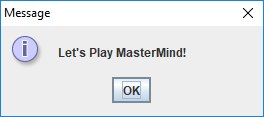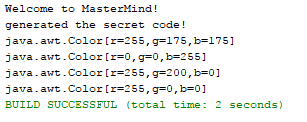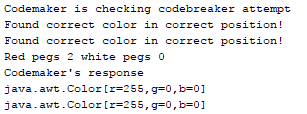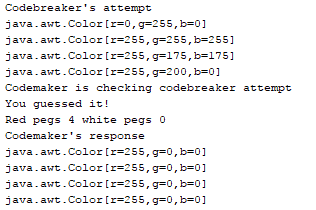Question
Assignment Scope For this assignment students will experience changing requirements resulting in modifying the original design. This is real world experience and is intentionally incorporated
Assignment Scope
For this assignment students will experience changing requirements resulting in modifying the original design. This is real world experience and is intentionally incorporated into projects every semester to expose students to the need to be flexible in software engineering. After initial project design of a project, when software engineers delve into writing the source code, it frequently exposes gaps in previous assumptions.
Additionally, software engineers will write some test code for the backend development that eventually will not be used in the final project or also known as thrown away. We do this to make sure our backend logic works before we add a user interface. We will also incorporate this methodology for this assignment of the project.
Finally, software engineers always perform regression testing after modifying source code. Regression testing is a type of software testing which verifies that software which was previously developed and tested still performs the same way after it was changed or interfaced with other software. Changes may include software enhancements, patches, configuration changes, etc.
The goal is to simulate the foundation of the components of the game MasterMind by creating a Codemaker, Codebreaker, and the Game; this includes:
1. Allow the code breaker to attempt guessing the secret code.
2. Have the code maker respond to the code breakers attempt.
a. If the correct color is in the correct position, the code makers response should include a red peg
b. If the correct color is in the wrong position, the code makers response should include a white peg
c. If the color is not correct no pegs are used
d. Red pegs are presented first, then the white pegs
3. Limit the number of attempts to 10 guesses, if the code breaker guesses the code, they win the game, if the code breaker does not guess the code within 10 guesses, they lose the game.
Tasks and Rubric
| Activity | |
| MasterMind project |
|
| MasterMind class |
|
| Constants package |
|
| Constants class |
|
| core package |
|
| Codebreaker class | 1. Add private method consoleAttempt() that will allow for backend testing of the logic, it shall do the following: a. Remove previous data stored in member variable codebreakerAttempt (Hint: class ArrayList has a handy method . removeAll()) b. Instantiate an instance of class Scanner to take input from the console c. Prompt the user to enter their guess, my implementation was as follows:i. System.out.println(" Enter your colors in left to right order " + ii. "Use BLUE, BLACK, ORANGE, WHITE, YELLOW, RED, GREEN, PINK:"); d. Loop until the user enters four valid colors with no duplicates i. Instantiate an instance of class String set equal to Scanners method next() 1. Evaluate the users input (Hint: recommend using either String method .toUpperCase() or .toLowerCase() to alleviate issues with case sensitivity) A. If the entered color matches one of the eight valid colors of the game, do the following: I. Output to the console the selected color II. Add the color to the member variable codebreakerAttempt B. If the size of the codebreakerAttempt is less than the max pegs specified in our Constants.java file then add a prompt to enter for the user their next color e. Using an enhanced for loop output to the console the codebreakers attempt 2. Update method getCodebreakerAttempt() to call method consoleAttempt() |
| Codemaker class | 1. Update method signature checkAttemptedCode () to match the modified method signature in interface ICodemaker 2. Implement method checkAttemptedCode() to do the following:a. Create local variables to store the number of red and white pegs scored by the codebreaker b. Create a local variable to store which pegs have been evaluated of the codebreakers guess c. Create a local variable to convert the secret code Set member variable to an ArrayList object d. Check if the codebreakers guess is exactly equal to the codemakers attempt (Hint: class ArrayList has a handy method .equals())i. If true, then red pegs should equal 4 ii. If true, then white pegs should equal 0 e. If item d. fails, then determine which pegs are the correct color in the correct position or the correct color in the wrong position i. Loop through the max pegs as defined in our Constants.java class 1. Check if a correct color is in the correct position by comparing index to index of the two ArrayLists representing the secret code and the codebreakers guess A. If true, increment the red peg counter B. Add the codebreakers guess at this index to the Set that stores the evaluated pegs 2. Use an enhanced for loop using the codebreakers attempt as the collection object A. Check if the secret code ArrayList contains the current element of the codebreakers attempt (Hint: class ArrayList has a handy method .contains()) i. Loop through the max pegs as defined in our Constants.java class 1. Check if the secret code ArrayList is NOT equal to the codebreakers attempt at the specific index AND the secret code ArrayList contains the codebreakers attempt at the specific index AND the pegs evaluated Set does NOT include the current codebreakers attempt at the specific index A. If true, then increment the white pegs counter B. Add the current index of the codebreakers attempt to the ArrayList that stores the evaluated pegs f. Evaluate the red and white peg counters to populate the codemakers responsei. For each red peg, add to the member variable codemakerResponse Color.RED ii. For each white peg, add to the member variable codemakerResponse Color.WHITE iii. Red is always first, then white! iv. Use an enhanced for loop to output to the console the codemaerkers response
|
| Game class | 1. Modify custom constructor a. Call method play() 2. Method play() a. Loop for the max number of attempts as defined in our Constants.java class AND the codebreaker hasnt guessed the secrete code i. Instantiate an instance of class ArrayList specified as using class Color, set equal to calling method getCodebreakerAttempt() in class Codebreaker ii. Call method checkAttemptedCode() in class Codemaker, passing the local variable from step a. as an argument iii. Instantiate an instance of class ArrayList specified as using class Color, set equal to calling method getCodemakerResponse () in class Codemaker iv. Use an enhanced for loop to output to the console the codemakers response for each codebreakers attempt |
| ICodebreaker interface |
|
| ICodemaker interface | 1. Modify method signature public void checkAttemptedCode() a. Add parameter ArrayList |
| IGame interface |
|
| userInterface package |
|
| MasterMindUi class |
|
| MasterMind application |
|
| Test Case 1 | Test Case 1 passes regression testing |
|
| Source compiles with no errors |
|
| Source runs with no errors |
|
| Source includes comments |
Perform the following test cases
| Test Cases | ||
|
| Action | Expected outcome |
| Test Case 1 | Run application start the game | JOptionPane.showMessageDialog() displays similar to figure 1 |
| Test Case 2 | Run application codemaker generates secret code | The console window should be similar to figure 2
Java does NOT automatically translate its Color objects to a String value, rather it prints the RGB code of the color. |
| Test Case 3 | Run application codebreaker prompted for their guess | The console window should be similar to figure 3 |
| Test Case 4 | Run application codebreaker entries acknowledged | The console window should be similar to figure 4 |
| Test Case 5 | Run application codemaker response | The console window should be similar to figure 5 |
======================================================================================
OUTPUT
======================================================================================







=========================================================================
Current Code
=========================================================================
Constants,java
================
/* * To change this license header, choose License Headers in Project Properties. * To change this template file, choose Tools | Templates * and open the template in the editor. */ package constants;
import java.awt.Color; import java.util.ArrayList; import java.util.Arrays;
/** * * @author kwhiting */ public class Constants { // peg color options public static final ArrayList
================================================================================
Codebreaker.java
==================
/* * To change this license header, choose License Headers in Project Properties. * To change this template file, choose Tools | Templates * and open the template in the editor. */ package core;
import java.awt.Color; import java.util.ArrayList; import constants.Constants;
/** * * @author kwhiting */ public class Codebreaker implements ICodebreaker { // member variables private ArrayList
/** * @param codebreakerAttempt the codebreakerAttempt to set */ public void setCodebreakerAttempt(ArrayList
}
========================================================================
Codemaker.java
=====================
/* * To change this license header, choose License Headers in Project Properties. * To change this template file, choose Tools | Templates * and open the template in the editor. */ package core;
import constants.Constants; import java.awt.Color; import java.util.ArrayList; import java.util.HashSet; import java.util.Random; import java.util.Set;
/** * * @author kwhiting */ public class Codemaker implements ICodemaker { // member variables private Set /** * @return the secretCode */ public Set /** * @param secretCode the secretCode to set */ public void setSecretCode(Set /** * @return the codemakerResponse */ public ArrayList /** * @param codemakerResponse the codemakerResponse to set */ public void setCodemakerResponse(ArrayList =============================================================== Game.java ============= /* * To change this license header, choose License Headers in Project Properties. * To change this template file, choose Tools | Templates * and open the template in the editor. */ package core; /** * * @author kwhiting */ public class Game implements IGame { private int attempt; private Codebreaker codebreaker; private Codemaker codemaker; public Game() { // instantiate the instances of the member variables codemaker = new Codemaker(); codebreaker = new Codebreaker(); attempt = 0; } public void play() { } /** * @return the attempt */ public int getAttempt() { return attempt; } /** * @param attempt the attempt to set */ public void setAttempt(int attempt) { this.attempt = attempt; } /** * @return the codebreaker */ public Codebreaker getCodebreaker() { return codebreaker; } /** * @param codebreaker the codebreaker to set */ public void setCodebreaker(Codebreaker codebreaker) { this.codebreaker = codebreaker; } /** * @return the codemaker */ public Codemaker getCodemaker() { return codemaker; } /** * @param codemaker the codemaker to set */ public void setCodemaker(Codemaker codemaker) { this.codemaker = codemaker; } } ========================================================================= ICodebreaker.java ================= /* * To change this license header, choose License Headers in Project Properties. * To change this template file, choose Tools | Templates * and open the template in the editor. */ package core; import java.awt.Color; import java.util.ArrayList; /** * * @author kwhiting */ public interface ICodebreaker { public void checkCode(ArrayList ====================================================================== ICodemaker.java ====================== /* * To change this license header, choose License Headers in Project Properties. * To change this template file, choose Tools | Templates * and open the template in the editor. */ package core; /** * * @author kwhiting */ public interface ICodemaker { public void generateSecretCode(); public void checkAttemptedCode(); } ========================================================================= IGame.java ===================== /* * To change this license header, choose License Headers in Project Properties. * To change this template file, choose Tools | Templates * and open the template in the editor. */ package core; /** * * @author kwhiting */ public interface IGame { public void play(); } ===================================================================== MasterMind.java ====================== /* * Karin Whiting * COP 3330 Object Oriented Programming * University of Central Florida */ package mastermind; import core.Game; import javax.swing.JOptionPane; import userinterface.MasterMindUi; /** * * @author kwhiting */ public class MasterMind { /** * @param args the command line arguments */ public static void main(String[] args) { System.out.println("Welcome to MasterMind!"); JOptionPane.showMessageDialog(null, "Let's Play MasterMind!"); Game game = new Game(); //MasterMindUi ui = new MasterMindUi(game); } } ================================================================== MasterMindUi.java ===================== /* * To change this license header, choose License Headers in Project Properties. * To change this template file, choose Tools | Templates * and open the template in the editor. */ package userinterface; import core.Game; import constants.Constants; /** * * @author kwhiting */ public class MasterMindUi { private Game game; public MasterMindUi(Game game) { this.game = game; initComponents(); } private void initComponents() { } } ===============================================================
Step by Step Solution
There are 3 Steps involved in it
Step: 1

Get Instant Access to Expert-Tailored Solutions
See step-by-step solutions with expert insights and AI powered tools for academic success
Step: 2

Step: 3

Ace Your Homework with AI
Get the answers you need in no time with our AI-driven, step-by-step assistance
Get Started


